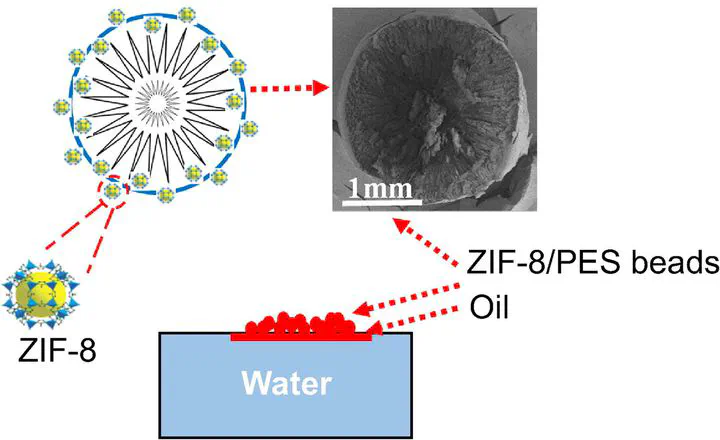Simple fabrication of zeolitic imidazolate framework ZIF-8/polymer composite beads by phase inversion method for efficient oil sorption
Jan 5, 2017·
,
,
 ,
·
0 min read
,
·
0 min read
Z. Abbasi
E. Shamsaei
X. Y. Fang
Prof. Dr. Bradley P. Ladewig
H. Wang

Abstract
Zeolitic imidazolate framework ZIF-8 beads of 2–3 mm in diameter were prepared using a simple one-step phase inversion method. The beads were fabricated by different amounts of ZIF-8 to polyether sulfone (PES) ratios. ZIF-8 played the role of an adsorbent while PES acted as a binder in the composite matrix to keep the ZIF-8 particles. Since ZIF-8 is highly hydrophobic, the beads floated on water and adsorbed oil droplets successfully. This efficient oil adsorption is attributed to the hydrophobicity and high surface area of ZIF-8 particles which can effectively adsorb oil droplets. Different characterization techniques were used to understand the textural properties of the composite beads. The FESEM analysis showed that ZIF-8 particles were well coated and dispersed into the polymer bead composites and some pores are created on the beads surface at higher loadings which facilitated high oil sorption. The nitrogen adsorption-desorption indicated that ZIF-8/PES beads had very high surface area which makes them suitable for adsorption applications. The ZIF-8/PES beads demonstrate easy handling and recycling compared to ZIF-8 powder and showed superior buoyancy and oil sorption capacity compared with natural sorbents like activated carbon. This study shows the phase inversion method can be applied to produce a variety of functional composite bead materials for specific applications like adsorption.
Type
Publication
Journal of Colloid and Interface Science